Are you new to brewing? Or have you been mastering the craft for quite some time?
Wild yeast presents a unique opportunity to explore and experiment with your beer, allowing you to explore and experience new possibilities of flavor, aroma, and body in your cider, wine or beer brewing.
Get ready to take your brews to the next level and discover the harnessing of wild yeasts!
What is wild yeast and how is it used in brewing?
Wild Yeast and its Role in Brewing
Fermentation is a crucial step in brewing, and wild yeast plays a big part in it. Yeast species found in nature, such as S. bayanus, S. cerevisiae, and Brettanomyces are commonly used as wild yeasts in brewing. These strains of yeast can be found on fruits and plants and have not been optimized for commercial use.

Wild yeast is known to give interesting taste profiles to beer but may also cause unstable fermentations, making it less commonly used than lab-grown yeasts. However, natural wines and sour beers often utilize wild yeast strains to achieve unique flavor profiles that cannot be obtained with cultured yeasts.
Classical French cider making has also utilized the use of wild yeast resulting in distinct characteristic flavors unique from industrial cider production methods.
Although not typically commercially available, some breweries experiment with wild yeasts to create specialty brews that combine the traditional brewing process with modern techniques.
A successful example was when a brewery sampled wild yeast from hives local to their Portland Area community which resulted in brews that had delicate floral notes attributed by the yeasts from hive honeycombs which contributed greatly to both their identity and mission of fostering earth-based connections through their beers.
When it comes to using wild yeast in cider brewing, it’s like playing the lottery – sometimes you get a delicious, fruity surprise and other times you’re left with a disappointing sour note.
How is wild yeast used in cider brewing?
Wild yeast, commonly found in fruit skins, is an important element of cider brewing. Its unique flavor profile and ability to convert sugars into alcohol make it a valuable alternative to commercial yeast strains. Utilizing wild yeast can result in a more complex and interesting flavor profile for the cider produced.

During the fermentation process, wild yeast consumes the sugars present in the cider, producing CO2 as a byproduct. This leads to carbonation while simultaneously decreasing the sweetness of the final product. However, utilizing wild yeast also comes with risks; certain strains can cause undesirable flavors such as horse stable or acetone.
S. bayanus is a common wild strain encountered by cider makers due to its tolerance to varying temperatures and ability to produce lower levels of alcohol. Additionally, hanseniaspora is common in wild-fermented cider and encourages malolactic fermentation which creates a buttery or creamy taste.
Incorporating wild yeast in brewing provides an opportunity for experimentation and unique flavor profiles but must be approached with caution due to unpredictability and potential off-flavors.
Wild yeast brings an element of surprise to brewing, like finding a unicorn in your backyard.
How is wild yeast used in beer brewing?
Wild yeast, an essential ingredient in the fermentation process, plays a vital role in beer brewing. The presence of natural yeasts adds diverse flavor profiles and complexity to the beer. Its application is typically seen in sour beers such as lambic, gose, and Berliner weisse. Using wild yeast can result in unexpected outcomes due to variations in environment and ingredients.

Brettanomyces, commonly known as “brett,” is a type of wild yeast that can spoil ordinary beer but is mainly used to make sour beers. It imparts varying flavors from fruity to funky notes, depending on its age and strain. Brettanomyces requires oxygen throughout fermentation and thrives well under acidic conditions.
Interestingly, some wild yeasts are unique to specific geographical locations such as Belgian lambics’ lactobacillus brevis found only in the Senne Valley region. The character of beer produced by wild yeasts has spurred distinct styles within the craft beer industry.
Isolating yeasts as part of the brewing process
Wild fermented beers, also known as sour beers or lambics, have a long history in Belgian monasteries. Traditionally, these beers were made by exposing the wort (a mixture of malted barley and water) to the open air, allowing wild yeast and bacteria to ferment the liquid.
In Belgian monasteries, the brewing process began with the malting of barley, which was then milled and mixed with water to create a mash.
This mash was then boiled and hops were added for flavor and preservation. After boiling, the wort was cooled and transferred to a large shallow vessel called a koelschip, which was typically located in the attic of the monastery.
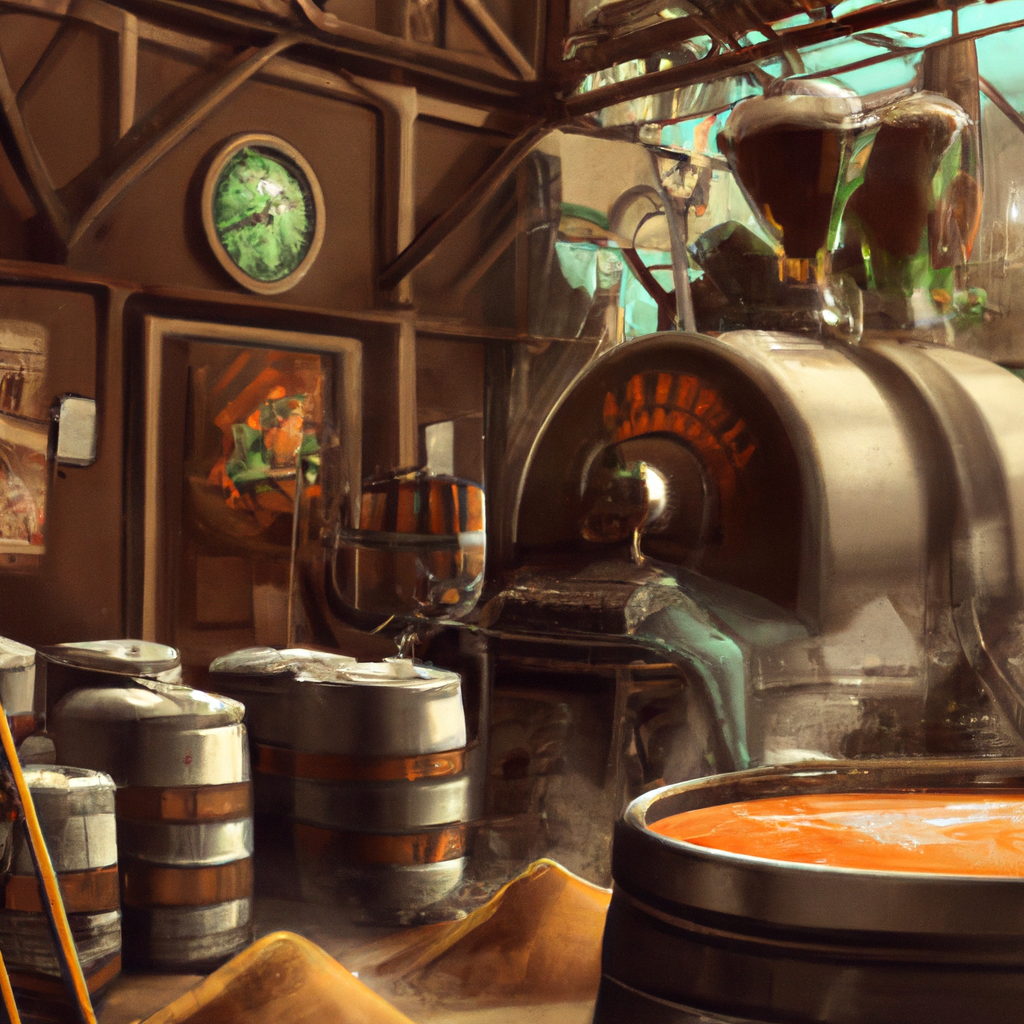
The koelschip was left uncovered, allowing the wort to be exposed to the wild yeast and bacteria present in the air. The mixture was left to ferment spontaneously, with the microorganisms consuming the sugars in the wort and producing alcohol and carbon dioxide as byproducts. This process could take several days to several months, depending on the conditions and the desired flavor profile of the beer.
Once fermentation was complete, the beer was typically aged in wooden barrels for additional flavor development. The barrels were often made of oak and had previously been used to store wine or spirits, which added additional complexity to the flavor of the beer.
Finally, the beer was bottled and conditioned in the bottle, often with additional yeast added for carbonation. The resulting beer was typically tart and acidic, with a complex flavor profile that included notes of fruit, oak, and funk.
Today, many Belgian breweries still use traditional methods to produce wild fermented beers, but the process has also been adapted and refined to meet modern brewing standards.
A true fact: In 1996, Russian scientists unearthed several bottles of perfectly preserved beer estimated to be over a century old with traces of brettanomyces present providing insight into traditional brewing methods.
Wild yeast may not be domesticated, but it adds a certain Je ne Sais Quoi to wine brewing.
Why is wild yeast good for wine brewing?
Wild yeast is beneficial for wine brewing due to its unique flavor profile. Unlike commercial yeast, wild yeast provides a natural taste profile that cannot be replicated.
This results in wines that are more sour or sweet depending on the types of bacteria and yeast present during fermentation. The presence of ketones and lactic acid produces unique flavors that add depth and complexity to the wine.
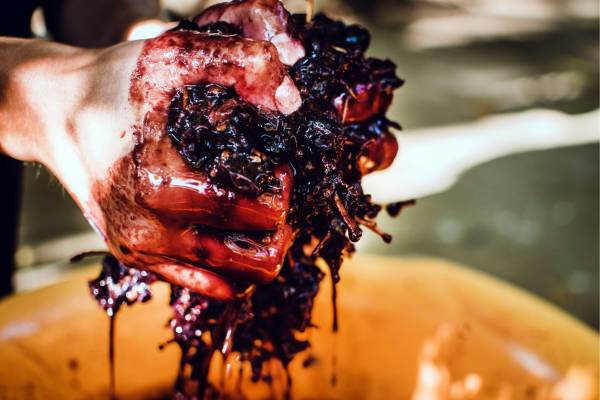
In addition, using wild yeast for brewing provides winemakers with an opportunity to create truly unique blends.
Since each batch of wine will have its own distinct taste, no two wines will be exactly the same. Furthermore, wild yeast also contributes to the terroir of the region where the grapes were grown, giving wines a sense of place and historical significance.
Interestingly, wild yeast can also produce off-flavors such as an acetone smell if not managed properly. But with proper monitoring and control techniques during fermentation, these off-flavors can be avoided.
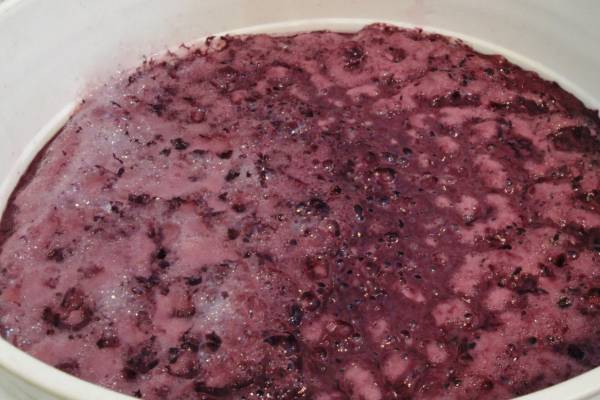
In ancient times, winemakers relied solely on wild yeast for their fermentations. It wasn’t until the 19th century that commercial yeasts became available. However, many modern wineries are now returning to using wild yeasts for their unique benefits in creating natural, complex wines.
Who needs to buy yeast when you can just take a walk in the park and collect some wild yeast for your brew?
Where to find wild yeast for home brewing?
To discover wild yeast for home brewing, explore sources like fruits, grapes or apples that are grown organically without pesticides.
Look for wild fermented beverages in stores. Wild yeast is also present in the air naturally and can be collected to start a spontaneous fermentation process. To ensure quality, use sterile equipment while collecting and storing wild yeast.

It’s important to keep in mind that not all wild yeast strains are suitable for brewing beer. The best approach is to experiment with different strains to ensure that the desired flavors are achieved without undesirable off-flavors.
Additionally, one can collect yeast from existing batches of homebrewed beer or seek out established breweries with a reputation of utilizing wild yeast strains. In this way, one can cultivate specific yeasts for his or her preferred flavor profiles.
Lastly, remember to be patient as cultivating wild yeast is a time-consuming process making it worthwhile however to obtain unique results.
Why buy expensive yeast when you can just leave a jar of honey on the counter for a few days?
How can you culture yeast from the wild?
The process of obtaining yeast from the natural environment can be fascinating as well as rewarding. Here is a brief guide on how to cultivate wild yeast for brewing.
- Start with untreated fruits: Gather some fresh, organic fruits that are not treated with any chemicals. You can use apples, grapes, or anything you prefer.
- Mix it with fruit juice: Crush the fruits to extract the juice and pour it into a sterilized container. Add water until you achieve the desired volume.
- Proper PH level: Adjust the pH level to around 4-5 by using citric acid or tartaric acid to keep away bacteria.
- Leave it uncovered to start out: Let the container sit in an open area without covering with a lid, so that natural yeasts in the air can land on its surface.
- Limit exposure to oxygen: Once bubbles are visible, close it tightly or cover it with an airlock to limit oxygen when growing well. Oxygen will encourage spoilage bacteria and mold.
When you first try this method, failures may happen like mold overgrowth or spoiled resulting juices; hence trying again till you master this skill will be rewarding.

Suggestions:
- Dilute often: Dilute often to ensure enough nutrients for the yeast in hydrometer testing
- Use proper PH level: Follow proper pH levels instructions
- Limit exposure oxygen: Protect from unwanted oxygens by limiting airflow
By following these tips and tricks, you will be able to handle experiments on cultivating wild yeasts successfully without relying on commercial yeast for your brews! Why freeze fruit when you can just let wild yeast do the chilling?
How to get wild yeast for mead?
Obtaining wild yeast for mead brewing involves finding sources where it naturally occurs. Yeasts are commonly found naturally in honey, on sugar dense fruits, and raisins.
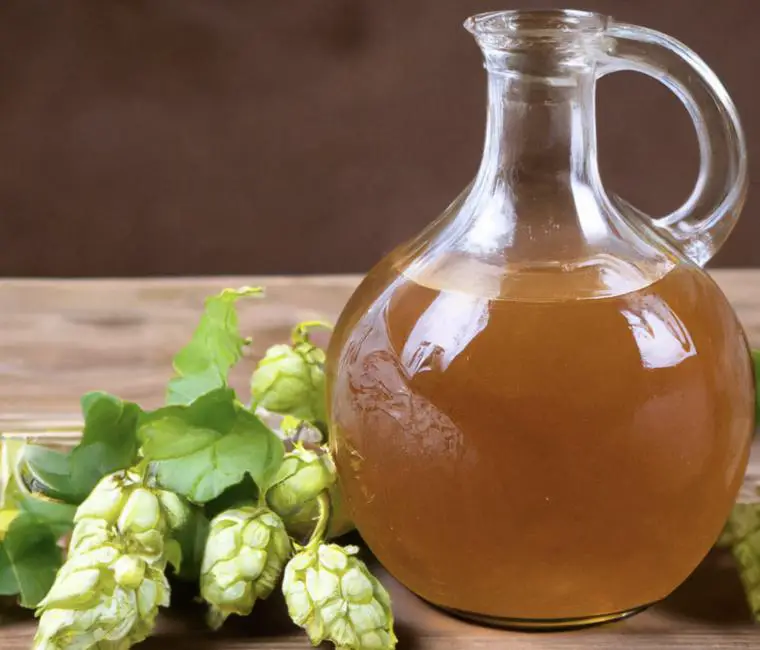
Here’s a simple 4-step guide to acquire wild yeast:
- Collect your source materials like honey, fruits or raisins.
- Put it in a fruit juice or diluted honey at slightly below room temperature.
- Use a sanitized cheesecloth over the container to secure it from any contaminants while keeping it open for air circulation.
- Wait around 48-72 hours; if bubbles start forming on its surface, then that indicates the presence of active yeast in the mixture.
- Make it anaerobic by adding and airlock and see if it keeps going.
- Measure pH – if dropping too quickly you likely have (lactic acid) bacteria instead of yeast! Start over…
It is essential to note that when using this method, there’s no guarantee about the type of wild yeast you’ll receive. In other words, this can result in a more unpredictable flavor outcome compared to using a specific commercial strain.
Fun Fact: Throughout most of history, ancient cultures used unrefined sourdoughs and spontaneous fermented alcoholic beverages as their primary source of leavening agents or alcoholic beverages as these were the only yeast sources available.
Does freezing fruit kill wild yeast?
Freezing fruit may not completely eliminate wild yeast, some spores may survive under suitable conditions. The cold temperature can put the organisms into a dormant state and cease or reduce their activity.
When fruits are frozen, water inside the fruit expands and this breaks down the cell walls membrane, which can release enzymes, sugars and other nutrients that may support yeast growth. So even if some yeast is killed, the remains could nourish remaining strains.
However, it’s vital to note that there’s no scientific evidence that suggests that all yeasts will survive freezing temperatures. Some fungi may not be able to endure such conditions at all.
Historically ancient civilizations used specific fruits to cultivate wild yeast populations when brewing beer. Grapes have been found to contain substantial amounts of wild yeasts such as Saccharomyces cerevisiae in them hence allowing them to ferment naturally and create alcoholic beverages like wine without modern commercial yeasts or added sugars.
Who needs commercial yeast when you can scavenge wild yeast like a survivor in the post-apocalyptic brewing world?
How to harvest wild yeast for beer?
To cultivate wild yeast for beer, one must know how to collect the microorganisms from the environment.
Follow these six steps:
- Make a mash using your intended malt
- Let it sit outside for a while to capture microflora in the air
- Inoculate with fresh untreated grains to maintain an optimal pH and nutrient base
- Monitor daily and stir once or twice a day
- Color changes and bubbles indicate yeast development
- When ready, bottle the yeast in sterile condition.
It’s crucial to make sure that no bacterial contamination occurs during this process.
To maximize fermentation chances, unique details like identification of host-specific wild yeasts that can brew various fermentation species is essential. Mesophilic brewing produces flavors distinct from thermophilic brewing.
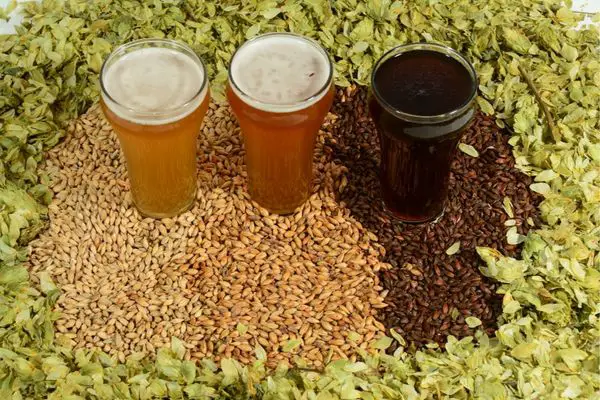
Suggested ways to ensure success include keeping everything clean, adjusting the environment pH if required, mapping specific wild yeasts’ range for better identification, and being patient throughout the whole process.
These suggestions help ensure high-quality beer brewed from cultured wild yeast!
Wild fermented beers are made using naturally occurring microorganisms that fall from the air and settle on the grains used in the brewing process. These microorganisms include yeast, bacteria, and other fungi that are present in the environment. The brewing process for wild fermented beers is similar to that of traditional beer brewing, but with a few key differences.
To make a wild fermented beer, the brewer begins by selecting a grain bill that will serve as the foundation of the beer. This can include a variety of different grains such as barley, wheat, rye, or oats. Once the grain bill has been selected, the brewer mashes the grains to extract the sugars and other nutrients needed for fermentation.
Isolating yeasts as part of the brewing process
Instead of adding a carefully selected yeast strain to the wort, a sour beer brewer allows the naturally occurring microorganisms in the surroundings to ferment the beer. The wort is left to cool and exposed to the air, allowing wild yeasts and bacteria to settle on the surface and begin the fermentation process.
The fermentation process for wild fermented beers is typically slower and more unpredictable than that of beers made with cultivated yeast strains. The mixture of microorganisms in the air can vary from day to day and even from location to location, leading to unique flavor profiles in each batch of wild fermented beer.
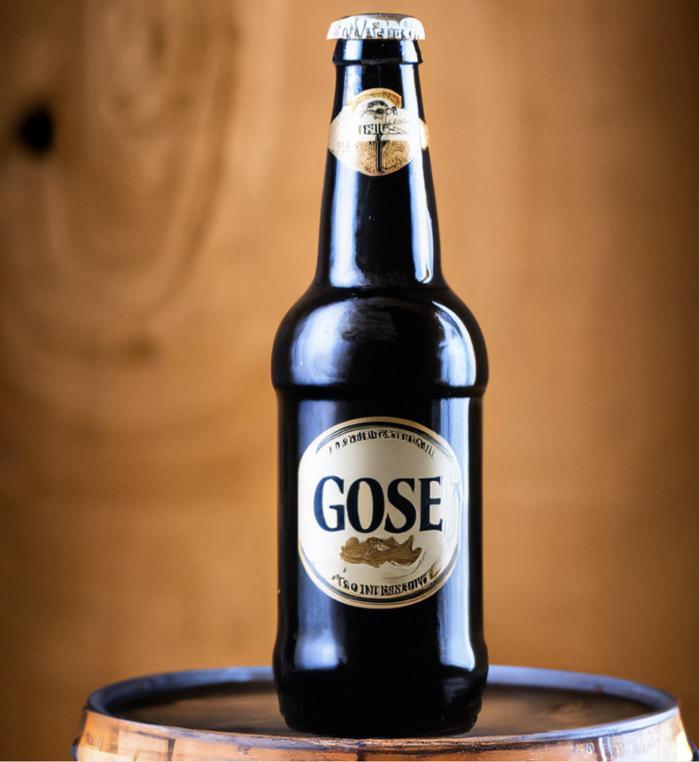
Once the fermentation process is complete, the beer is bottled or kegged and allowed to condition for a period of time. This allows the flavors to develop and mature, resulting in a complex and nuanced beer that is unique to the specific combination of microorganisms present in the environment where it was brewed.
Overall, wild fermented beers are a unique and exciting way to experience the flavors and aromas of the natural world. By harnessing the power of the microorganisms present in the air, brewers can create beers that are truly one-of-a-kind.
Commercial yeast is like a pick-up line at a bar – it gets the job done, but lacks the natural charm and complexity of wild yeast in brewing.
What is the difference between commercial yeast and wild yeast?
Commercial yeast and wild yeast have crucial differences in brewing. The latter is a strain that comes naturally from the environment, while the former is a cultured or manufactured type of yeast intended to deliver uniform results in beer production.
| Commercial Yeast | Wild Yeast | |
|---|---|---|
| Origin | Lab cultivation | Environment |
| Control | Predictable | Less predictable |
| Alcohol Tolerance | High | Lower |
| Off-Tastes | Less | More |
| Shelf Life | Longer | Shorter |
Although commercial yeast guarantees consistency in beer production, using wild yeast can add unique flavors to the beverage. However, it may result in less predictable fermentation timelines, lower alcohol tolerance, more off-tastes, and shorter shelf life of wine/cider/beer.
Pro Tip: Using wild yeast can be beneficial for producing unique flavors but should be approached with caution and proper preparation to avoid unwanted spoilage organisms.
How to stop a wild yeast fermentation?
To halt the proliferation of wild yeast in brewing, there are various ways to stop fermentation. Lowering the temperature, removing oxygen, and adding sulfites are some popular methods. Here is a 6-step guide on how to put a stop to wild yeast fermentation:
- Lower the temperature – Reduce the temperature of your brew by lowering it below 60°F. This will encourage sluggish propagation and keep the wild yeast from growing.
- Add sulfites – Add sulfites such as potassium metabisulfite to your brew to hinder the growth of yeast. Use sulfur dioxide carefully since excess unsanctioned use can impact flavor profile adversely.
- Heat above 115F – Increase your brew’s temperature up to or above 115F for an extended period of time. This will kill off any pervasive microbes.
- Add alcohol – Introduce alcohol into the mix by adjusting or increasing ethanol levels through chemical additives or extending primary fermentation period – excessive levels of alcohol may eventually control unwanted yeasts growth.
- Wait it out – Allow fermentation operations’ timeline before interfering since other factors like excessive acidity eventually neutralize rogue bacteria and fungi
Choosing equipment that limits exposure yields better results; also having an inaccessible ‘cold crash’ part of your equipment can play this role as well.
Lastly, make sure you sanitize all equipment thoroughly before brewing begins. An extra precautionary step is rinsing glassware with hot water right before usage.
In summary, stopping wild yeast proliferation requires attention, effort, and patience when pinpointing solutions tailored towards particular cases. Trial and error within permissible range yield satisfactory results providing care prevents bacteria and fungi since unmanaged wild yeast lead to spoilage and result in irreversible effects on the drink. Better beware of the wild yeasts, they’ll make your brew more funky than a disco ball.
Things to consider when brewing with wild yeasts
When working with wild yeasts in brewing, certain considerations are crucial. Understanding and controlling the fermentation process is important since wild yeasts can be slower to ferment and more susceptible to contamination than conventional strains.
Additionally, lower flocculation means that they are harder to clear and may require additional steps to achieve clarity. Less tolerant of campden, which can inhibit bacterial growth, requires careful management during the brewing process.
A table outlining the key factors to consider when working with wild yeast in brewing is as follows:
| Factor | Description |
|---|---|
| Fermentation Rate | Slower than conventional strains |
| Contamination Risk | More susceptible to unwanted microbial growth |
| Flocculation Behavior | Lower rates of settling and clearing |
| Campden Tolerance | Less tolerant of anti-microbial chemicals |
It is also essential to note that the unique flavor profiles created by wild yeasts add complexity and depth to beer styles such as Lambics or farmhouse ales. Wild yeast fermentations provide an opportunity for experimentation and discovery; however, it comes at the cost of added risk.
According to Brewing Microorganisms – A Practical Approach, published by Springer Nature Switzerland AG, “Wild yeast can cause unpredictable outcomes during brewing; therefore it is essential for brewers using them to employ strict sanitation practices.”
Going wild with yeast in brewing may sound risky, but hey, life’s too short for plain ol’ beer and sanitized fermentation!
Is wild yeast safe?
Wild yeast is generally safe for brewing beer, although some strains may produce off-flavors, more methanol or sulfites. The use of wild yeast can contribute to the production of unique flavors and aromas in beer. While most breweries use cultivated strains of yeast, some homebrewers prefer to experiment with wild strains found in nature.
It is important to note that not all wild yeast strains are suitable for brewing and must be carefully selected and tested before use. Some may also require special treatment such as cold crashing or filtering to remove any unwanted bacteria.
Furthermore, it is crucial to maintain proper sanitation practices throughout the brewing process as wild yeasts can also introduce unwanted bacteria into the beer. Overall, with proper testing and sanitation measures in place, wild yeast can be a safe and exciting addition to the brewing process.
A study conducted by FASFC (Federal Agency for Food Chain Safety) found that multiple spontaneous fermented ciders were contaminated with harmful microorganisms such as E.coli and Salmonella.
These bacteria are found naturally in your gut and does not necessarily make you sick, especially when they are inhibited by the acids and alcohol in hard cider.
Recently, a small craft brewery in Oregon experimented with using a strain of wild yeast sourced from a nearby orchard in their farmhouse ale. The resulting beer had subtle notes of apple and pear, showcasing the unique flavors that can be achieved with wild yeast. This success encouraged the brewery to continue experimenting with different strains of wild yeast in future brews.
Frequently Asked Questions
Q: How is wild yeast different from commercial yeast?
A: Wild yeast is not specifically bred for brewing and can be unpredictable in terms of flavor and fermentation time. Commercial yeast, on the other hand, is bred specifically for brewing and is more consistent in terms of flavor and fermentation time.
Q: How do you cultivate wild yeast for brewing?
A: Wild yeast can be captured from the air, fruit, or other natural sources and grown in a starter culture. It is important to sterilize all equipment and properly identify the yeast strain before using it in a brew.
Q: What types of beer are best suited to wild yeast fermentation?
A: Wild yeast is often used in sour beers, farmhouse ales, and other styles that benefit from complex and funky flavors. It can also be used in combination with other yeast strains to create unique flavor profiles.
Q: What are the benefits of using wild yeast in brewing?
A: Wild yeast can add depth and complexity to a beer’s flavor profile, and can result in a more unique and interesting beer. It also allows for greater experimentation and creativity in the brewing process.
Q: What are the risks of using wild yeast in brewing?
A: Wild yeast can be unpredictable and may result in off-flavors or inconsistent fermentation. It is important to properly identify the strain and use sterilized equipment to avoid contamination.




